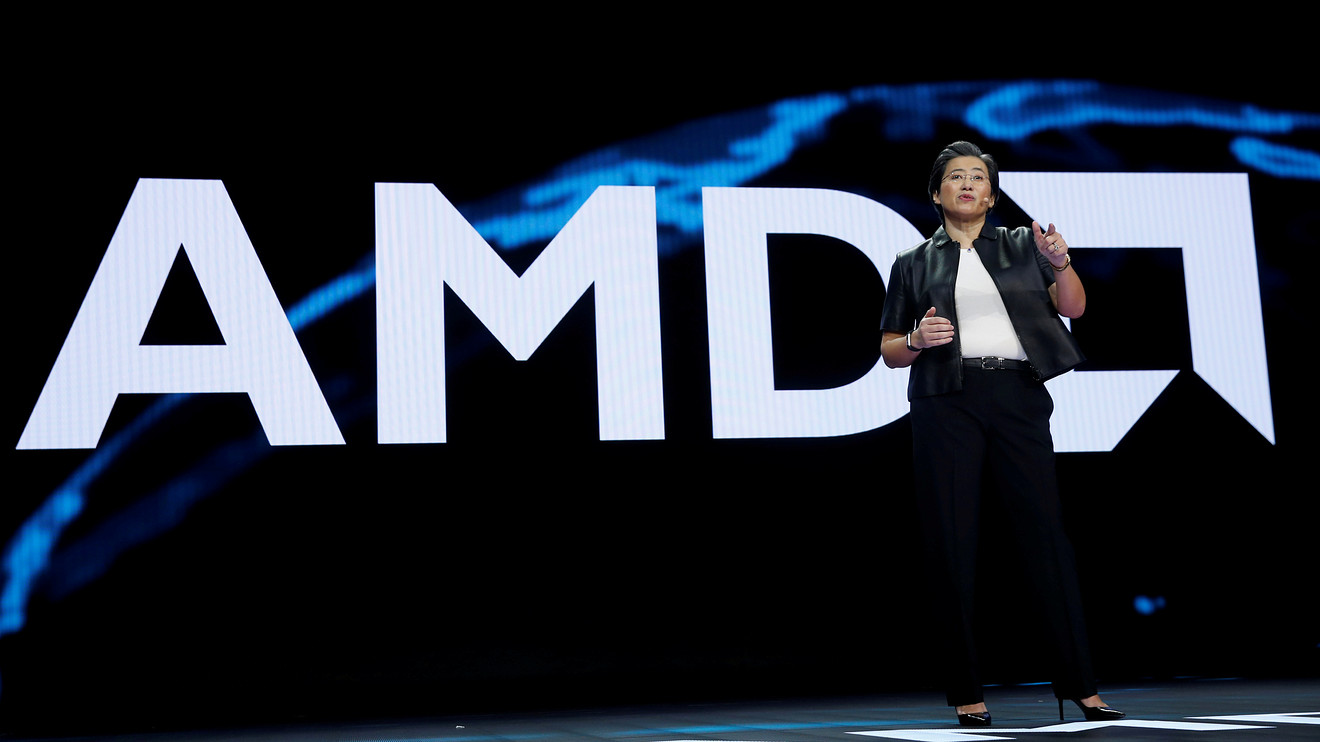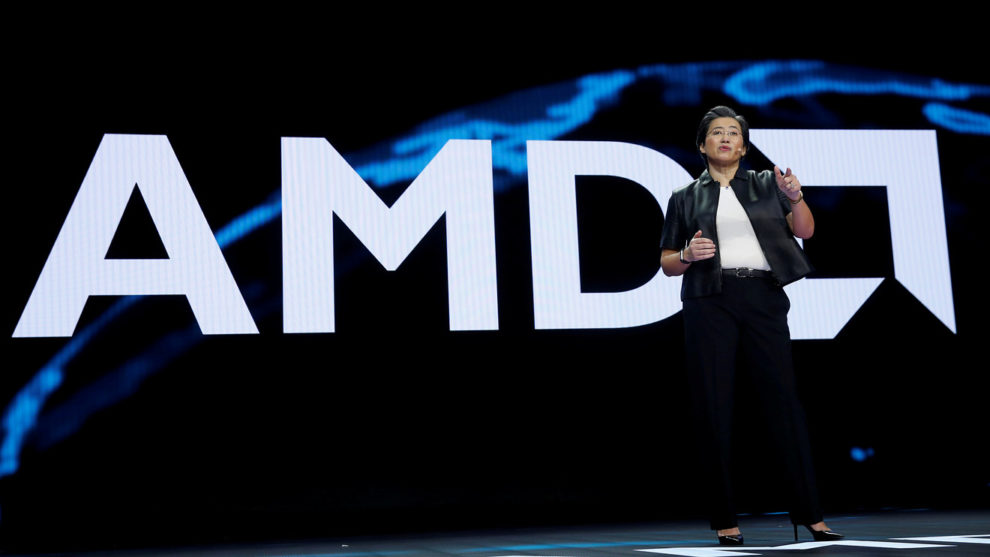
If Advanced Micro Devices Inc. is indeed serious about being in the data-center business, the chip maker needs to start telling investors what is happening in that business.
AMD AMD, +2.58% reported fourth-quarter earnings that included a big miss in its combined enterprise/data center/semi-custom business Tuesday, with revenue of $465 million coming in more than $100 million lower than average expectations. AMD’s stock, the top performer in the S&P 500 SPX, +1.01% in 2018 and 2019, tumbled as much as 5% in after-hours trading.
AMD’S stock has been on this roll over the past two years largely due to expectations that it would challenge dominant Intel Corp. INTC, +2.47% in the higher-margin server market. The results on Tuesday, as well as AMD’s forecast for a sequential decline in the first quarter, cause some obvious concern about that investment thesis.
AMD said its fourth-quarter results were “partially offset” by the semi-custom business, which is mostly driven by custom chip designs for videogaming consoles, a business that is expected to pick up in the second half with a new generation of consoles from Microsoft Corp. MSFT, +1.96% and Sony Corp. SNE, +1.00% . But executives declined to break down exactly how much of the segment and the forecast was from the gaming chips and how much was from server chips, and what AMD executives did say about the data-center business was not very specific.
“In server, revenue grew by a strong double-digit percentage as unit shipments and ASPs increased sequentially, driven by demand for our second-gen Epyc processors,” AMD Chief Executive Lisa Su said at the beginning of Tuesday’s conference call.
In the call with analysts, it was clear that there was a lot of frustration with AMD combining these two seemingly disparate businesses. Wall Street analysts tried various tactics to ascertain more data on how steep the decline in semi-custom actually was and how its profit margins were impacting AMD’s overall gross profit margin, but largely received vague statements in response.
Mitch Steves, an analyst with RBC Capital Markets, flat-out asked for better clarification.
“Basically, for Q4, it looks like semi-custom was probably down 50% sequentially or somewhere around that range. Am I at least in the ballpark?” Steves asked. “And then secondly, from the server perspective, I’m not expecting you to give numbers on this, maybe qualitatively? How much of your revenue is actually cloud versus enterprise?”
Su helped only slightly in her response, noting that the company believed revenue in the semi-custom business would be down “in the high 30s” in the second half, but that it was off more than that, likely meaning that the semi-custom business fell more than 36% in the second half of 2019. She also said that regarding the mix of cloud/enterprise in 2020, “it will move around from quarter to quarter, but I think the best guess is, let’s just call it roughly even between the two.”
AMD would save a lot of time and painful back-and-forth if it just provided specific numbers about its semi-custom business and the enterprise/data-center business, such as the revenue and profit information, just as rivals Intel and Nvidia Corp. NVDA, +3.23% do. Analysts are obviously frustrated. Before the call even started, Wells Fargo analyst Aaron Rakers wrote in a note that “AMD needs to provide investors with greater revenue transparency — i.e., more quantifiable details on server and data-center GPU results.”
“Our business is reported in two segments, with one around the PC business (Computing and Graphics) and non-PC business (Enterprise, Embedded, and Semi-Custom),” an AMD spokesman said in a statement. “We do not separately report the businesses below the segment level but we do try to provide color commentary and data to help investors best understand our business drivers.”
If AMD wants to continue to be thought of as a PC company, that’s fine. But if it wants to be known as a server/data-center provider, it needs to break out that revenue separately for investors. Otherwise, it may be increasingly difficult to view AMD as a serious contender in that market.
div > iframe { width: 100% !important; min-width: 300px; max-width: 800px; } ]]>






